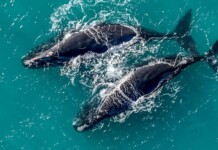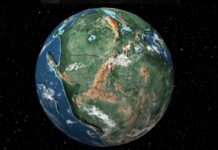
Antarctica was in the news this week in a surprising way: it was gaining ice, rather than losing it.
While Antarctic ice sheet loss has averaged around 147 gigatons per year for the period between 2010 and 2020, a remarkable reversal occurred at the opening of this decade.
Writing in China Earth Sciences, researchers at Tongji University, led by Dr. Wei Wang and Professor Yunzhong Shen, reported that East Antarctica’s Wilkes Land and Queen Mary Land region recorded 108 gigatons of average ice sheet mass gain per year from 2021 to 2023.
1 gigaton is equivalent to 1 billion tons, and 108 gigatons is the equivalent weight of 1.5 million of America’s flagship aircraft carriers, to use a silly bit of context to aid the reader in their imaginings.
The growth period included several years in which various parts of the globe saw some of highest temperatures on record.
Using data from the GRACE (Gravity Recovery and Climate Experiment) and GRACE-FO (GRACE Follow-On) missions, which take measurements of the changes in the Earth’s magnetic field that reflect large amounts of ice gain or loss, the team found that four glacier basins, called Totten, Moscow University, Denman, and Vincennes had gained, not lost, a significant enough quantity of ice to influence a reduction in the rate of sea-level rise.
Driven by unusually-high precipitation levels, the amount is predicted to offset 0.3 millimeters of sea level rise per year—or roughly one quarter of the total rise seen during the twenty-teens.

Given that we’re in 2025, the scientists admit they don’t know if the trend in re-freezing continued or reversed. Given that the amount of precipitation was unusual, the scientists caution against assuming the trend will simply continue.
EARTH IN RUDE HEALTH: Century of Tree Planting Stalls the Warming Effects in the Eastern United States, Says Study
Data from the research period extended into 2024 and showed mass loss. However, almost all reductions were proceeded by gains, and all gains by reductions, based on the influence of the seasons.
Trend lines had the ice sheet increasing in size by the end of the final downturn without recording the subsequent upturn, which, if it were smaller than the previous year, would indicate the trend was already reversing.
CLIMATE CHANGE OVERESTIMATED: Climate Models Need an Upgrade: Plants Absorb 31% More Carbon Than Previously Thought
Melting of the Antarctic Ice Sheet is the single largest contributor to sea level rise along with the Greenland Ice Sheet. Together they hold most of the world’s fresh water.
Advocates for action to prevent the worst effects of climate change often portray the situation as being imminent, with little if any time left to act. The southern continent has offered a surprise that, literally speaking, the worst effects of climate change actually can be delayed and reversed.
SHARE This Unexpected And Uplifting Climate Story With Your Friends…




















I did enjoy the “silly bit of context” the author used – it’s always nice to see creativity and humor when we all wake up and read Good News Network!